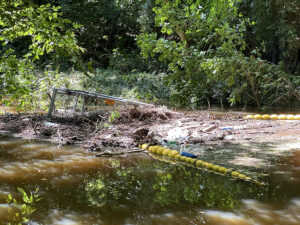News
Nash stormwater control measures get rain-tested
Education, Environmental, Sound Rivers, Stormwater Issues, Stormwater Restoration Projects, Tar-Pamlico Watershed, Water Quality
Posted on January 9th, 2025
The rain garden at Northern Nash is collecting rainwater just fine. When its native plants mature in the spring, it will work even better.
Recent stormwater projects at two Nash County campuses had a challenging test: a full day of rain.
Their score: A+, according to Sound Rivers Program Director Clay Barber.
“All of our projects had water flowing through them; the rain gardens are draining as they should; they’re not holding rainwater longer than they need to. They seemed to be appropriately sized because it rained all day and none of them overflowed,” Clay said.
Stormwater Education Coordinator (and Resilience Corps NC AmeriCorps member) Sierra Stickney visited both Southern Nash and Northern Nash high schools on Monday to check in on the recently built projects, braving the elements to get photos for an update.
“While rainy is the best time to check your stormwater control measures, props to Sierra for being out there in the rain and the cold,” Clay said.

Projects completed in 2024 were a bioswale enhancement, regenerative stormwater conveyance system (RSC), rain garden and rainwater harvesting cistern at Southern Nash and two rain gardens and a bioswale enhancement at Northern Nash.
“Some of these practices, like the RSC and the bioswales, involve a lot of rock to slow down the flow of the water and keep the soil in place,” Clay said. “Now the swale enhancement and RSC at Southern Nash have really clear water in there, where we didn’t see that before because it was flowing over bare soil. They’re performing well for water quality.”

An added benefit is erosion prevention that would have cost the schools a lot of money in the long run, he added.
“Two of these projects go under school roadways,” Clay said. “If left in their previous state for a few years, there would have been significant road damage. It’s an overall benefit to the schools and their infrastructure down the road.”
The Southern and Northern Nash high schools’ green stormwater infrastructure projects were funded through a partnership with Cummins Rocky Mount Engine Plant. The work is part of Sound Rivers’ Campus Stormwater Program, in which flooding and erosion issues on campuses across the Neuse and Tar-Pamlico watersheds are being addressed one green stormwater infrastructure project at a time. The projects also prevent pollutants captured by stormwater from flowing directly into waterways.
Though plenty of projects were wrapped up in 2024, 2025 holds a new slate of Campus Stormwater Program projects, starting with an RSC system and rainwater harvesting cistern for West Craven Middle School.
Like the stormwater work Sound Rivers is doing on campuses across the Neuse and Tar-Pamlico watersheds? So do we! Donate to support the Campus Stormwater Program today!
Resilience Corps NC AmeriCorps is a service program of the Conservation Trust for North Carolina, funded by a grant through the North Carolina Governor’s Commission on Volunteerism.

Related News
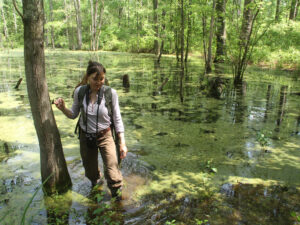
Public hearing will determine the fate of many NC wetlands
June 26th 2025
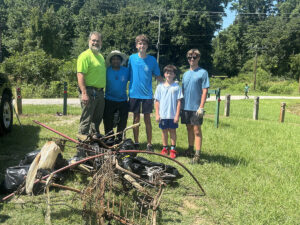
Clayton gets first official trash-trap cleanout
June 25th 2025
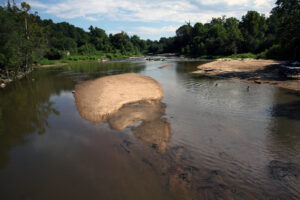
Bill passed by NC House threatens public health, environment
June 25th 2025
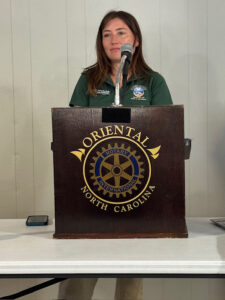
Riverkeeper talks programs with Oriental Rotary Club
June 25th 2025

Riverkeeper, intern scout Smithfield trash trap locations
June 25th 2025

Fish kill reported on the Neuse
June 19th 2025
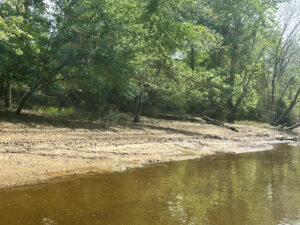
Riverkeeper meets with ATV park attorney
June 19th 2025

Riverkeeper samples scene of Rocky Mount sewer spills
June 19th 2025
